It is a truth universally acknowledged that a man, when encountered with a home improvement project, will recruit his closest friends to help him. Whether it is building a backyard bridge, assembling a king-sized bed, or installing a flatscreen TV in the wall, man hates working alone. The typical dedicated individual is usually capable of completing the task himself. With the help of his friends, though, he completes the job faster, better, and in a more enjoyable fashion. Inviting friends also adds the benefit of building not just porches but relationships. Because when there’s work to do, the people who show up tend to be his closest friends. Nothing brings people closer together like a big project.
The views expressed in this article reflect those of the author mentioned, and not necessarily those of New Creation.
Though often overlooked, the world of academia functions in similar ways as the man and his home improvement project. Just as building a porch requires extra hands, academic projects often require the assembly of minds. Without widespread contributions from a host of experts in different fields of study, man would never have reached the peak of Everest, let alone the moon. The same is true for terrestrial discovery, which is still occurring daily. In fact, one of the world’s most ambitious scientific endeavors is occurring actively right now. This project is called the All-Taxa Biodiversity Inventory (ATBI). It is a wide-ranging effort to document the entire flora and fauna of the Great Smoky Mountains National Park (GSMNP), in North Carolina and Tennessee.1

The Purpose of the ATBI
The ATBI is an attempt to collect, observe, and digitize every living species of the GSMNP. Active since 1998, the project will likely continue for decades more before it reaches its goals. (There are an estimated 100,000 species in the park).2 But the wide-ranging benefits to science, education, and conservation make the ATBI an enticing endeavor. An endeavor that scientists consider to be worth the effort and the wait.
Science and Technology
Scientifically speaking, the ATBI will lead to the discovery of thousands of species. It will also document species already discovered but not described in detail. Since the Smokies are a biodiversity hotspot, the data collected in the GSMNP will not only apply to the Smokies but to most of the Eastern United States.
Technologically, the ATBI will offer an embarrassment of riches for scientists and casual nature enjoyers alike, by digitizing all the data collected in the Inventory. Once accomplished, everyone would have access to the identification tools for every species they encounter. Plants, animals, and fungi, will be documented in the database, including information for each species on what it is, where it is, and what it does.3
Education and Conservation
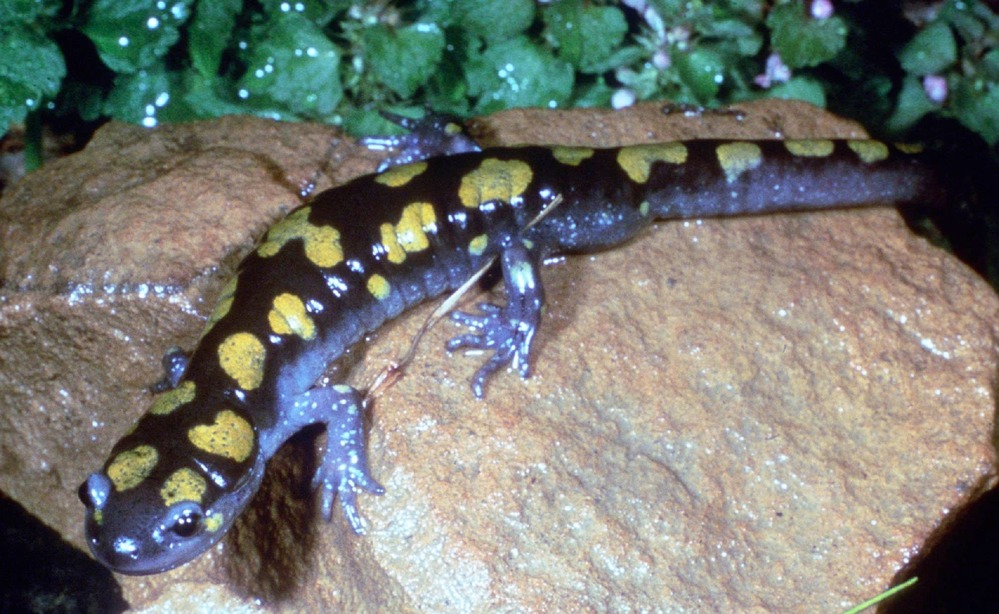
Educationally, the ATBI has already united scientists and laymen alike in this project, breaking down barriers between academia and recreation. This is what makes the ATBI so inspiring. It creates connections between people from all backgrounds, uniting everyone around an appreciation of nature.
Environmentally, the ATBI will reveal pivotal information that will lead to conservation and preservation.4 The project aims not only to document a species presence in the park, but also its relationship to other organisms. Thus, the ATBI will identify invasive species, predator-prey relationships, endangered species, interspecific competition, and parasitism in the park, all of which is vital knowledge in the quest to conserve species in decline.
Two Approaches of the ATBI
The ATBI currently utilizes two techniques to rapidly collect, document, and digitize park records.5 These two strategies occur simultaneously in the park, utilizing the benefits of each technique.
The Traditional Approach
The traditional technique involves recruiting as many scientists, experts, and volunteers as possible to collect and identify specimens in large quantities. This method is short, concentrated, and rigorous. Collecting sessions with groups of people from all ages are termed “bio-blitzes.” These blitzes achieve results rapidly, and in large portions. The traditional approach also has the added benefit of inspiring teamwork and building connections between field experts. The ATBI encourages connections between people from different disciplines, since the project largely requires all hands on deck.
The Structured Approach
The second strategy is the structured approach. This technique is more calculated, slow, and standardized. While it does not bring people together, it has the advantage of letting experts contribute to the project without needing to travel. The structured approach begins with sampling collections of specimens from traps or plots from around the park. These specimens are sent to experts around the globe for identification. This technique allows scientists with specific expertise to identify specimens for the ATBI. In addition, scientists can make comparisons and observations between different plots. This sheds light on the geography, habitat, community dynamics, and behavior of the organisms being studied. This is a unique feature that “bio-blitzes” do not have.
An Example of the Structured approach
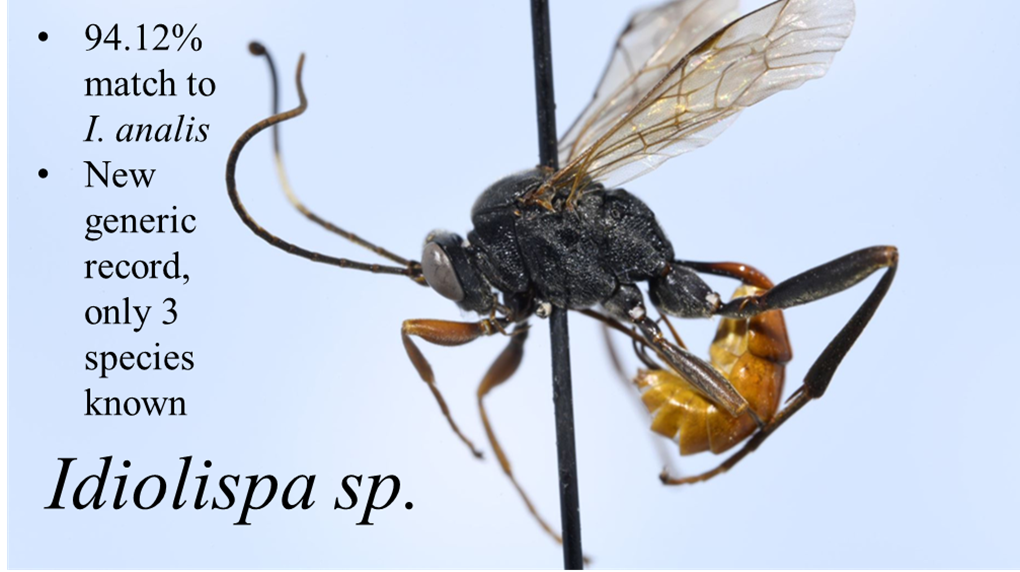
My own undergraduate research project was an example of the structured approach.6 As part of an Invertebrate Zoology class, a few students—including myself—received ichneumonid wasps collected from the Smokies. Wasps of this massive group (order Ichneumonidae) are parasitoid wasps. This means their larvae infect and eventually kill a host species. We sorted these wasps into morphospecies: specimens that look physiologically distinct. In other words, we guessed which ones were different species based on appearance alone. We then sent 95 representative specimens to the Canadian Center for DNA Barcoding.
Barcoding involves decoding a short segment of the specimen’s DNA, so researchers can distinguish that species from all other species. Once barcoded, researchers could access the results via the Barcode of Life Database (BOLD) which can calculate the percentage of the gene that is similar between specimens. Individuals that were more than 98% similar are believed to be the same species. Meanwhile, individuals whose barcodes vary more than 2% are not usually considered to belong to different species. In this way, new records were discovered by comparing the genetic barcode of the wasp specimens to known records in the database. The results were exciting. Out of just a handful of the barcoded specimens from the subfamily I focused on (Ichneumonidae: Cryptinae), six were new park records, and four of these six are potentially new species for science.7
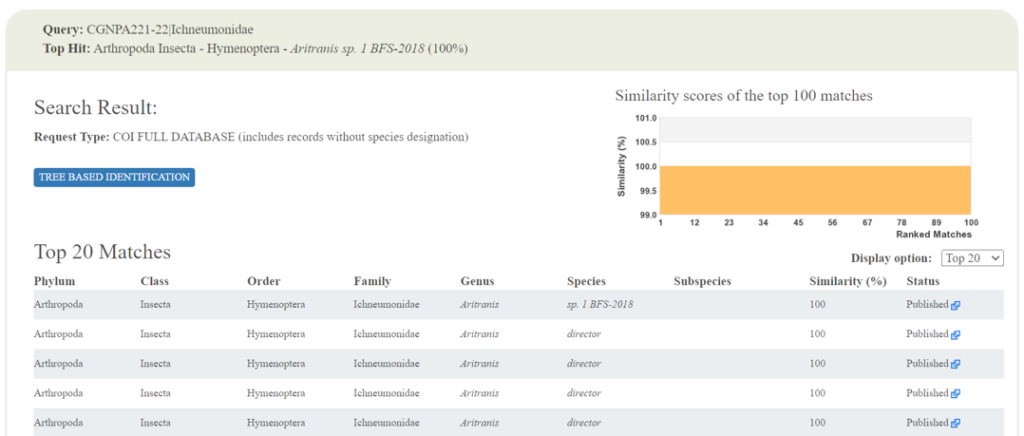
Out of only 95 specimens sent to the CCDB, our research project found several potentially new species. This is a great example of how the structured approach can drive scientific discovery in the ATBI, even by undergraduate research students working miles away.
Progress of the ATBI
The progress of the ATBI is closely monitored by the not-for-profit partner organization called Discover Life in America (DLiA), which is now celebrating its 25th anniversary. The DLiA website provides detailed lists of new park records, new species to science, and already known species for each group of organisms in the Smokies.8
The Spring 2023 issue of Smokies Guide (the official newspaper of the GSMNP) boasts that “to date, DLiA has helped add more than 10,000 species to the Inventory, including more than 1000 species completely new to science!” Already, researchers have completed and uploaded to a database a guide to the park’s 31 species of salamanders for visitors to use.9
Why Creationists Should Participate in the ATBI
There are three distinct and significant benefits for creationism that the ATBI offers.
Scientific Benefits
The first is the most obvious: the sheer amount of scientific data that will be available to creation scientists. When the ATBI reaches its conclusion, creation scientists must be ready to fit the abundance of new evidence into a creation model. Just as secular scientists will interpret the data through an evolutionary lens—creating new phylogenies and constructing ancestral trees—creationists should apply aspects of the creation model (such as baraminology) to the same evidence. The abundance of information the ATBI is collecting about biodiversity in North America is an exciting opportunity for creation science, especially since topics such as biodiversity and rapid diversification are areas where creation science has room to expand.
Unifying Benefits
The second advantage the ATBI offers to creation science is an opportunity to unite creationists and other scientists toward a common goal. One major benefit of the ATBI in general is its ability to break down barriers between scientists across disciplines, distances, and degrees of education. It is easy to imagine such a project beginning to break down barriers between creationists and the scientists of mainstream academia. Imagine this door opening for the expansion of YEC ideas. Even if creationism doesn’t explode in popularity as a result of the ATBI, it could at the very least offer creationists a way to perform data collection and interpretation alongside secular scientists. This is a rare but incredibly valuable opportunity that we should not overlook.
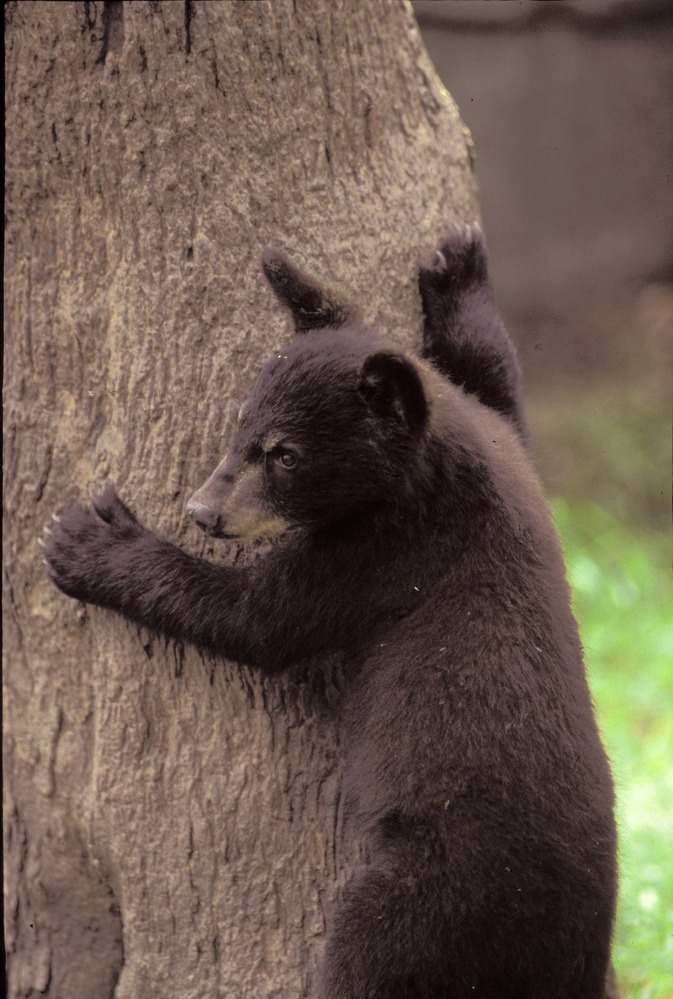
Evangelical Benefits
This expansion is particularly appealing because it is not occurring in a strictly academic sense. The ATBI is not a top-down, impersonal approach in which experts educate the public from afar. The ATBI is, by necessity, personal. Thus, not only is it a broad opportunity for the expansion of scientific ideas, but it is also a specific opportunity for Christian evangelism. The biblical call for evangelism is difficult to fulfill from an office.
The ATBI brings scientists out of their bubbles and creates a network between them that allows for personal connections. Whether it is collecting data during one of the GSM’s “bio-blitzes,” or directly communicating online from afar, scientists are making personal connections through the ATBI. These connections open the door for discussions about creation, origins, and personal faith. Though we should not view the ATBI as a pragmatic opportunity to advertise Christianity like a salesman, the personal element of this massive project offers unique opportunities for Christians to reach secular scientists by showing a deep appreciation for God’s creation and representing Christ well.
Building Communities
When a natural disaster, such as a tornado or a hurricane, rips through a city and damages people’s property, people are forced to collaborate and collectively rebuild. Often, the task seems daunting, and the end goal is not even close to being in sight. But once the experts establish a system, and the general public embraces the game plan, and each individual invests the physical effort, the city rebuilds. As the project is completed, friendships begin, connections are made, and younger people learn from older generations about teamwork and problem solving. Even in the face of a terrible situation, the community grows and improves.

The ATBI in the Great Smoky Mountains demonstrates that we can build communities around large, daunting projects, no natural disaster required. We can obtain the same rewards of rebuilding a city after a hurricane in the pursuit of scientific discovery. The All-Taxa Biodiversity Inventory is a monumental project, but the scientific community can accomplish it through dedication, collaboration, and community. And the benefits to science (including creation science) go beyond the information in a database.
Conclusion
The completion date for the ATBI of the Smokies is unknown. But the valuable benefits of the project are already being realized. The ATBI is not just collecting specimens to make a glorified field guide. It is a unifying project whose benefits to science are only a sample of the project’s successes. Its greatest strength is that everyone can get involved. Anybody who shares a passion for nature and a willingness to become part of a large community dedicated to scientific discovery should consider contributing to the ATBI. The more people involved, the more progress we make, and the more relationships we form.
As creation scientists, we shouldn’t satisfy ourselves with merely poking holes at evolution or building models in creationist bubbles. We should push ourselves and encourage others to take our expertise into the scientific world, to conduct and present rigorous research, to collect current data, to edify others and to be edified ourselves.
This bridge isn’t going to build itself.
Footnotes
- Linzey, Donald W. “Mammals of Great Smoky Mountains National Park: 2016 revision.” Southeastern Naturalist 15.m8 (2016): 1-93. ↩︎
- Sharkey, Michael J. “The all taxa biological inventory of the Great Smoky Mountains National Park.” Florida Entomologist (2001): 556-564. ↩︎
- Sharkey, Michael J. “The all taxa biological inventory of the Great Smoky Mountains National Park.” Florida Entomologist (2001): 556-564. ↩︎
- White, Peter, and Keith Langdon. “The ATBI in the Smokies: An overview.” The George Wright Forum. Vol. 23. No. 3. George Wright Society, 2006. ↩︎
- Nichols, Becky J., and Keith R. Langdon. “The Smokies all taxa biodiversity inventory: history and progress.” Southeastern Naturalist 6.sp2 (2007): 27-34. ↩︎
- Nichols, Becky J., and Keith R. Langdon. “The Smokies all taxa biodiversity inventory: history and progress.” Southeastern Naturalist 6.sp2 (2007): 27-34. ↩︎
- Ramgren, J., Landers, E., V. Seymour, L. Cordner, S. Fluet, H. Peek, J. Phelps, B.Paulk and J.D. Blaschke. 2023. New wasp records from the ichneumonid subfamily Cryptinae in Great Smoky Mountains National Park. Annual Conference of the Association of Southeastern Biologists. Winston-Salem, NC. March 2023. ↩︎
- “Smokies Species Tally.” Discover Life in America, Will Kuhn, 6 Apr. 2023, https://dlia.org/smokies-species-tally/#species-tally-details. ↩︎
- Sharkey, Michael J. “The all taxa biological inventory of the Great Smoky Mountains National Park.” Florida Entomologist (2001): 556-564. ↩︎




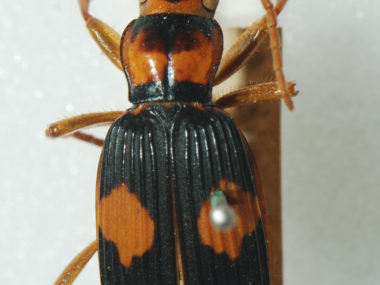
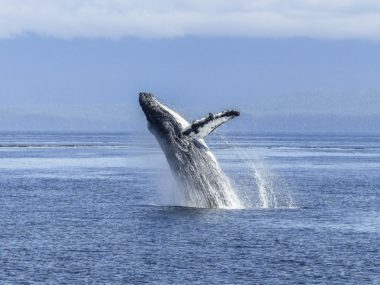

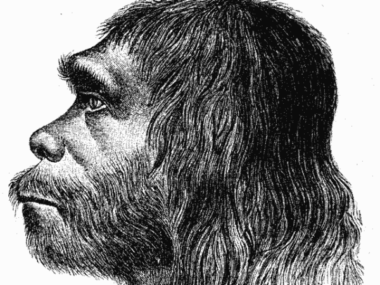




I would love to talk to you about the three new cave crayfish species I helped in discovering in a similar project. Particularly how it would prove Creationism. Larry Moritz 479 444 6611 or [email protected]
Wow Mr. Ramgren how do you have time for this and a teacher also